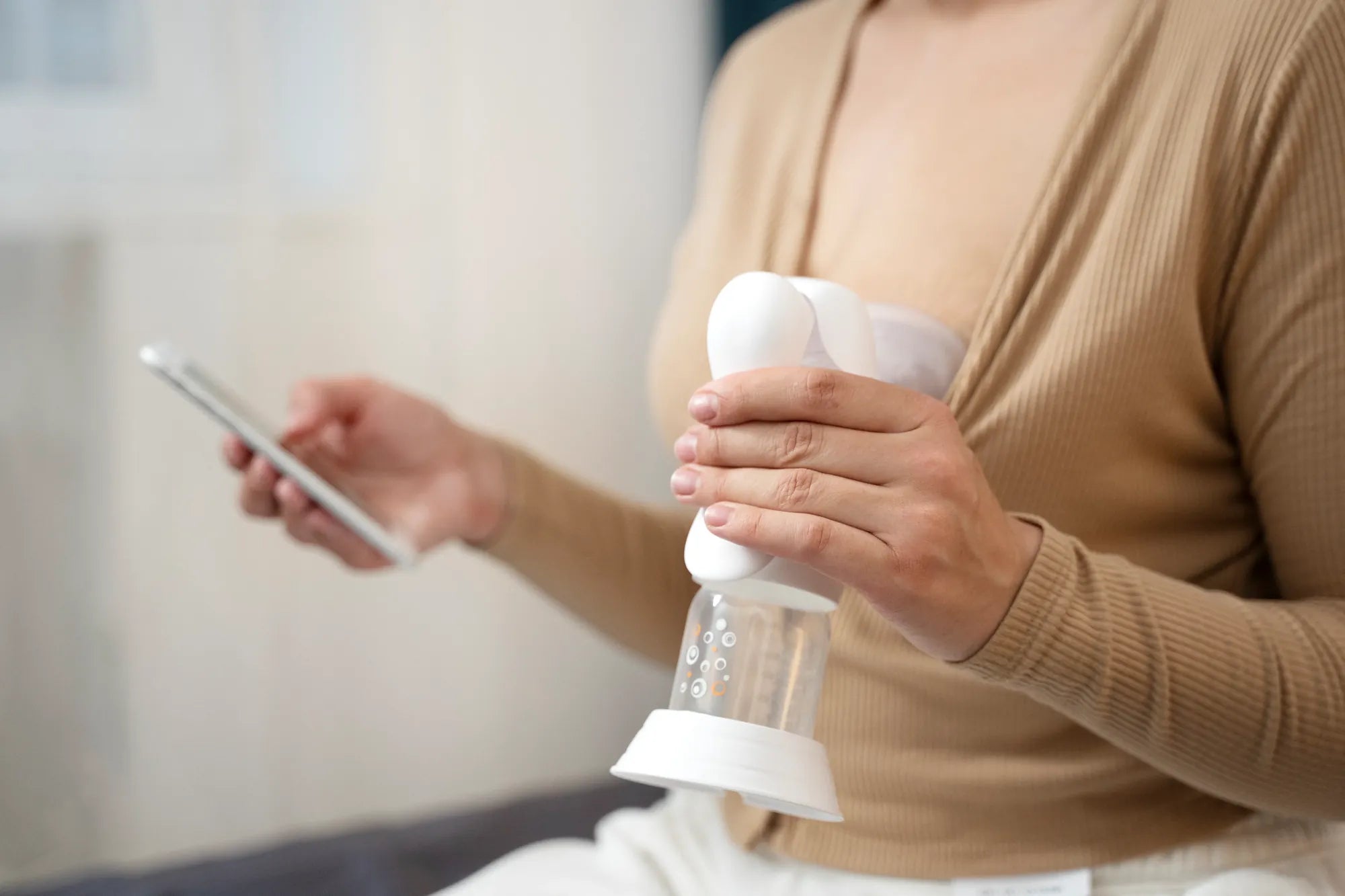Home
Pregnancy, Breastfeeding, and Pumping: The Ultimate Guide for Moms
What Are the Different Types of Breast Pumps: A Comprehensive Guide

What Are the Different Types of Breast Pumps: A Comprehensive Guide
Breastfeeding is a beautiful and natural way to nourish your baby, but it can also come with challenges. For many mothers, breast pumps are an essential tool to ensure their baby gets the nutrition they need, even when they can't be there to breastfeed directly. But with so many options available, how do you know which type of breast pump is right for you? In this article, we'll explore the different types of breast pumps, their features, and how to choose the one that best suits your lifestyle and needs.
Manual Breast Pumps
Manual breast pumps are the simplest and most affordable option available. They are operated by hand, requiring you to squeeze a handle or lever to create suction and express milk. These pumps are lightweight, portable, and easy to use, making them a popular choice for occasional use or as a backup option.
One of the main advantages of manual breast pumps is their simplicity. They don't require batteries or electricity, so you can use them anywhere. However, they can be tiring to use for extended periods, and they may not be as efficient as other types of pumps. If you only need to pump occasionally or want a pump for emergencies, a manual breast pump could be a great choice.
Electric Breast Pumps
Electric breast pumps are powered by electricity or batteries and are designed for regular use. They are more efficient than manual pumps and can express milk faster and with less effort. Electric pumps are ideal for mothers who need to pump frequently, such as those returning to work or those with low milk supply.
There are two main types of electric breast pumps: single and double. Single electric pumps express milk from one breast at a time, while double electric pumps can express milk from both breasts simultaneously. Double pumps are more efficient and can save time, but they are also more expensive. Electric breast pumps often come with adjustable suction settings, allowing you to customize the pumping experience to your comfort level.
Single vs. Double Breast Pumps
When choosing between single and double breast pumps, it's important to consider your pumping needs and lifestyle. Single pumps are more affordable and portable, making them a good option for occasional use or for mothers who only need to pump one breast at a time. However, they can be time-consuming if you need to pump both breasts.
Double breast pumps, on the other hand, are more efficient and can save time by expressing milk from both breasts at once. They are ideal for mothers who need to pump frequently or who have a busy schedule. While double pumps are more expensive, they can be a worthwhile investment for mothers who need to pump regularly.
Wearable Breast Pumps
Wearable breast pumps are a relatively new innovation in the world of breast pumps. These pumps are designed to be worn inside your bra, allowing you to pump hands-free and discreetly. They are compact, portable, and easy to use, making them a popular choice for busy mothers who need to pump on the go.
One of the main advantages of wearable breast pumps is their convenience. You can pump while doing other activities, such as working, driving, or caring for your baby. However, wearable pumps may not be as powerful as traditional electric pumps, and they can be more expensive. If you value convenience and discretion, a wearable breast pump could be a great option for you.
Hospital-Grade Breast Pumps
Hospital-grade breast pumps are the most powerful and efficient type of breast pump available. They are designed for frequent use and are often used by mothers with premature babies, low milk supply, or other breastfeeding challenges. These pumps are typically rented from hospitals or medical supply stores and are not intended for long-term personal use.
Hospital-grade pumps are highly effective at stimulating milk production and can be used by multiple users when properly sterilized. However, they are large, heavy, and not portable, making them less convenient for everyday use. If you have specific breastfeeding challenges or need to establish or maintain your milk supply, a hospital-grade pump may be recommended by your healthcare provider.
How to Choose the Right Breast Pump
Choosing the right breast pump depends on your individual needs, lifestyle, and budget. Here are some factors to consider when making your decision:
- Frequency of Use: If you plan to pump frequently, an electric or double breast pump may be more efficient. For occasional use, a manual pump could suffice.
- Portability: If you need to pump on the go, consider a lightweight and portable option like a manual or wearable pump.
- Comfort: Look for a pump with adjustable suction settings to ensure a comfortable pumping experience.
- Budget: Breast pumps vary widely in price, so consider your budget when making your decision. Keep in mind that some insurance plans may cover the cost of a breast pump.
- Special Needs: If you have specific breastfeeding challenges, such as low milk supply or a premature baby, a hospital-grade pump may be necessary.
Breast pumps are a valuable tool for many mothers, offering flexibility and convenience in their breastfeeding journey. Whether you choose a manual, electric, single, double, wearable, or hospital-grade pump, the right choice depends on your unique needs and lifestyle. By understanding the different types of breast pumps and their features, you can make an informed decision that supports your breastfeeding goals and ensures your baby gets the nutrition they need.
Share
